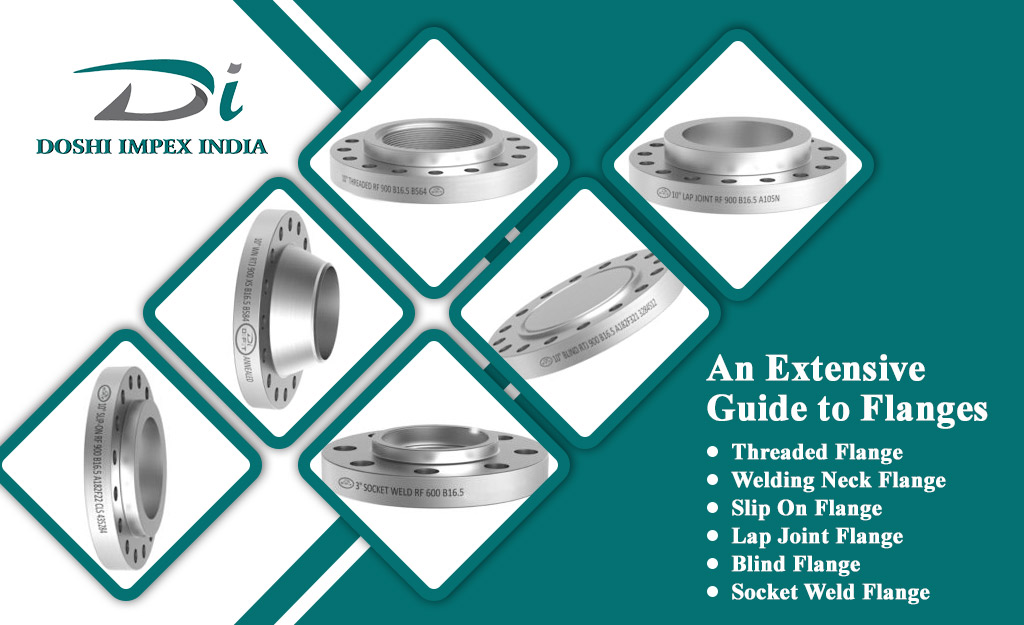Flanges are protruding sections with edges, collars, or rims essential for connecting different equipment components or fixing two pipes. They are relatively mechanical pipe connectors that offer high pressure to piping applications. Their usage also involves dismantling temporary installations, piping systems, or connections between different materials.
It is reliable, cost-effective, and readily available in wide ranges and an alternative to welding. Many buttweld fittings manufacturers would agree that flanges are the second-best option to connect pipes and other components in cases where welding is not possible or can prove costly.
The carrying capacity of the flanges is also prominent as opposed to the different mechanical connectors. Flanges are effective for systems with issues like lateral buckling due to pressure and temperature variations or pipe-waking. The flange fitting is effective and designed in accordance to withstand the high temperature and resistance to corrosion.
With flanges, the flexibility is well-maintained through the piping system, which deliberately makes the system components easy to disassemble.
A flange connection involves the following components-
- Gasket
- Pipe flanges
- Bolting
It is essential to use high-quality materials for flange fittings and gaskets. The most common materials are stainless steel flanges. One can also use other materials for flanges based on applications.
Common types of flanges and their characteristics
Flanges cannot be classified as a standard-size-fits-all solution. One needs to consider its types, like a blank flange or a blind flange, and identify the right design for your piping system. It ensures a longer service period, reliable operation, and optimal price. Some of the most common flange types are listed below;
Threaded flange: This type of flange has threads on the interior of the bore. These threads match the male threads while pipe fitting. It makes the connection strong and avoids the need for welding.
Welding neck flanges: It requires experts’ help to fit in the butt welding for installation. The performance and integrity in systems involving repetitive bends and applications at high temperatures and high pressure make them perfect for hydraulic pipe fittings.
Slip-on FlangesThese types of flanges are common and accommodate any system for a project involving a uniform high flow rate. One has to match hydraulic pipe O.D. and flange. You need to follow a technical installation process as one requires fillet welding on both sides. One can also consult experts like Doshi Impex India, for flange and flange fitting, who will also guide the installation process.
Lap Joint Flange: It features a two-piece structure and requires a butt weld to join its stub or a backing flange to make the connection. It is perfect in small space installations and systems requiring regular maintenance and dismantling.
Blind Flanges: It is essential to isolate or terminate a piping system. They have a bolt-able blank disc. These flanges provide an excellent seal with the right gaskets.
Socket-Weld Flange: It is ideal to fit the small pipe diameter in a much lower temperature and pressure. Their design is simple and easy to install and avoids issues connected with thread edges.
Types of Flanges And their Applications
The different flange applications are based on pressure capacity and pipe sizes. Following are the different types of flange and their applications–
- Threaded flanges are applicable for low-pressure applications for small pipes. They can be connected directly to applications that do not require welding.
- Welding Neck flanges are applicable for high-pressure applications and suitable for all pipe sizes. They are perfect for high-temperature applications like boilers etc.
- Slip-on flanges are applicable for low-pressure applications and suitable for all pipe sizes. They are perfect for applications with simple assembly and lower installation budgets.
- Lap joint flanges are applicable for low-pressure applications and suitable for all pipe sizes. They are perfect for applications that require frequent dismantling.
- Blind flanges are applicable for very high-pressure applications and suitable for all pipe sizes. They are perfect for applications like flow pressure testing and closing pipes.
- Socket-Weld flanges are applicable for very high-pressure applications and suitable for small pipe sizes. They are perfect for applications involving a better flow of fluids.
Flange sizes and Classifications of Flanges
A perfect classification of the flanges also involves the functional design of a flange, dimensions, and factors that impact the flange choices like maintenance, design, and updating of a piping system.
Following are the terms associated with flange-
- Outside diameter: It is the distance between opposite edges of the face of the flanges.
- Thickness: It is a measure of thickness for the outer attaching rim.
- Bolt circle diameter: It is the distance between the opposite bolt holes that are measured from the center.
- Pipe size: It is a designation of the pipe that the flange corresponds to.
- Nominal bore size: It is a measurement of the I.D. of flange connectors.
The above flange features determine their performance in different environments and processes. To determine the flange applications and their functionality at different temperature and pressure ranges, they are divided into classes, with suffixes like #, lb, or class, which are interchangeable.
These also change based on vendors or regions. To understand the right requirement, one can also contact suppliers like Doshi Impex India, who can guide you throughout the project.
Types of Flange Class
● Class 150
● Class 300
● Class 600
● Class 900
● Class 1500
● Class 2500
Performance features of flanges:
The performance features and properties of the flanges are dependent on numerous factors. It includes weight, ease of assembly, and durability measures. The pipe flanges generally have a pressure rating. It defines the maximum pressure and the designs to hold it.
Conclusion
To sum it up, the guide on flanges is a solid foundation for you to exercise your knowledge and design in choosing the ideal flanges for the piping system. Moreover, experts at Doshi Impex India, leading pipe fittings suppliers in UAE also provide extensive guidance based on your project requirements.
For more information –Contact us
 Call +91 9833907060
Call +91 9833907060 Send E-mail
Send E-mail
